
Spring/Summer 2024
ISSN 2475-7128
Greater Muscatine Chamber of Commerce & Industry
We are a team collectively driven to do our best.
HNI is an organization of people who always let respect, integrity, quality of character and of product, and an endless pursuit of improvement guide what we do and who we are. Driven by an inspiration to grow and to advance our impact, our empowered people are the definition of HNI culture.


Scan to learn more.

Featuring Big Sand Mound and the Fairport Fish Hatchery, this summer/ spring edition of Muscatine Magazine highlights some of Muscatine County’s conservation gems . We are also wishing a Happy Retirement to Dave Bakke, a friendly and familiar face at the Muscatine County Conservation Board for over 35 years

Conservation efforts play a crucial role in preserving Muscatine’s natural heritage . Thank you to those who have made conservation a priority in Muscatine to ensure the well-being of its ecosystems for generations to come
 — Rebecca Paulsen, Editor
— Rebecca Paulsen, Editor




Muscatine Magazine • Spring/Summer 2024 1 In this issue Big Sand Run . . . . . . . . . . . . . . . . . . . . 2 Fairport Fish Hatchery . . . . . . . . . . . . . . . 8 River Mussels 11 Bosch Pest Control 12 Dave Bakke 16 Muscatine Art Center . . . . . . . . . . . . . . .19 River, Prarie, and People . . . . . . . . . . . .20 Iowa Archeological Timeline 22 On the Cover A dramatic sky sets the background behind Muscatine’s iconic Norbert F. Beckey Bridge. Photo by Mark Washburn. Muscatine MAGAZINE Greater Muscatine Chamber of Commerce & Industry 100 W. 2nd St. • Muscatine, Iowa 52761-4027 563-263-8895 Muscatine Magazine is published quarterly by: Greater Muscatine Chamber of Commerce & Industry 100 W. 2nd St. • Muscatine, Iowa 52761-4027 Email: chamber@muscatine.com ISSN 2475-7128 Editor: Rebecca Paulsen, GMCCI Creative Director: Mike Shield, Shield Design Contributors: Margaret Hurlbert, Jessica Hubbard, Virginia Cooper/Muscatine Art Center, Jim Elias, Sarah Marston For advertising info: Contact Rebecca Paulsen at (563) 263-8895 or rpaulsen@muscatine.com Muscatine Magazine is a quarterly publication focused on Muscatine, Iowa, and the surrounding area. The publisher reserves the right to refuse and/or edit any materials submitted for publication. Published articles and advertising do not constitute endorsement. ©2024 Whether you’re buying, building, or refinancing, we make the process easy. Get pre-qualified online at https://cbibt1.mortgagewebcenter.com/ or visit any of our locations. cbibt.com l 800.292.1234 Scan this QR code to visit our Mortgage Center. Ask AbsolutelyaboutFree Checking, too! Member FDIC
Mortgages Made Editor’s Corner
Follow us! facebook com/muscatinemagazine
Rebecca Paulsen, Editor of Muscatine Magazine
Big Sand Run Nature
A little-known
By Margaret Hurlbert
From the majesty and power of the Mississippi River to the wooded hollows of Wildcat Den State Park, visitors and residents consider natural beauty one of the Muscatine area’s defining features . While people often praise the region’s rolling hills and riverfront views, few know of one of its most stunning natural pearls, the Big Sand Mound Nature Preserve Tucked between Bayer’s Muscatine facility and MidAmerican Energy’s Louisa County Generation Station, this ecological treasure protects unique habitats that

offer homes to diverse plants and animals found in few or no other places in the Midwest .
In its 510 acres, the Big Sand Mound Nature Preserve contains numerous habitats, including upland mixed hardwood forests, floodplains and shallow ponds, sand barrens, and its signature sand prairie Once common in areas with sandy soils, such as Muscatine Island, sand prairies differ from people’s typical perception of prairies because they have dry sandy soil with limited nutrients, inviting hearty species like prickly pear cacti
and surprising animals to make it their home At Big Sand Mound, more than 600 plant species inhabit this last remnant of local sand prairie, as do several endangered or threatened species of reptile found in few to no other parts of the state
In the 1970s, as MidAmerican Energy prepared to construct the Louisa County Generation Station, an environmental review of their site revealed the rarity of the species inhabiting part of their property MidAmerican set aside 420 acres of land in 1977 to protect these animals
2 Muscatine Magazine • Spring/Summer 2024
Nature Preserve:
natural pearl
from harm . A few years later, in 1981, the nearby Bayer facility contributed another 90 acres to the preserve, bringing it up to its current size Today, MidAmerican Energy and Bayer continue maintaining the site to preserve its stunning biodiversity
Since its creation, volunteers have worked tirelessly to protect Big Sand Mound’s rare species and ensure the preserve thrives for future generations to steward . Dr . Josh Otten, Don Becker, and Jim Scharosch have led the charge to maintain Big Sand Mond’s endangered and threatened species and keep its sand prairie habitat as healthy as possible . Sarah Marston, the health, safety, and environment management

systems lead for Bayer and a member of the Site Habitat Team, shared that Becker and Scharosch come out to the preserve, “nearly every day in the summer,” and that they have invested much time and effort into helping Big Sand Mound’s vulnerable species Becker even moved to Muscatine to make it easier for him to work at the preserve regularly .
Researchers and volunteers from the Bur Oak Land Trust, Iowa Department of Natural Resources, Muscatine and Louisa County Conservation Boards, United States Army Corps of Engineers, United States Fish and Wildlife Service, as well as individuals Dr Paul Mayes, Kelly McKay, Brian
Ritter, and Dr . Thomas Rosberg also lent their expertise to assist in preservation initiatives, which have required sustained efforts since 2021 to remove red cedar and black locust trees inappropriate to the area and reduce the number of raccoons on the preserve, which often eat immature reptile eggs before they have the chance to hatch .
Volunteers from MidAmerican Energy, Bayer’s habitat team of 100 members contribute to efforts to keep the preserve clean and free of invasive species . “It’s outstanding to have so many employees so committed to conservation,” Marston observed, adding that Bayer’s volunteers’ work
little-known
Muscatine Magazine • Spring/Summer 2024 3
Photos by Sarah Marston
“If you can get kids to care, that’s what secures the future of the preserve.”

led to the Muscatine site receiving gold certification, the highest honor possible, from the Wildlife Habitat Council since 2021, along with several conservation awards and nominations
Together, these efforts have realized profound results, with the number of endangered and threatened reptiles born annually increasing since restoration efforts began “My favorite thing about this is the people who are involved with it,” she said “There are so many people who put in an effort to preserve this place . ”
Volunteers share the beauty and importance of Big Sand Mound Preserve with budding and seasoned naturalists through varied educational opportunities Each year, fourth-grade students from Columbus Junction, Louisa-Muscatine, and Wapello Community School Districts visit to hike and participate in hands-on learning experiences Older students enjoy discovering the preserve too, with visitors from Susan Clark Junior High School and Muscatine Community College occasionally

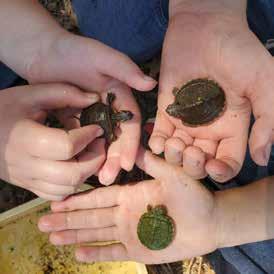
coming to see the concepts they learned about in the classroom in action In partnership with area conservation districts, birding groups and guests from the Iowa Naturalist Association have toured the preserve, seeing their interests in action in Big Sand Mound’s varied and unusual habitats .
Every three years, Bayer and MidAmerican Energy host a field day for the general public, allowing them to glimpse the treasures the preserve holds The next field day will happen in 2026, and Marston encourages people to get it on their radar early so they do not miss the one-day event In the future, Marston shared that the preserve may hold bio blitzes, where volunteers from the community
work with longtime volunteers and
Left: Katie Hammond, now of Muscatine County Conservation, Dale Maxson of the Nature Conservancy, and Jamie Farmer of the United States Fish and Wildlife Service conducting a controlled burn.
Center: Students looking at three species of turtle hatchlings.
Right: A student thank you note to Big Sand Mound volunteers.
scientists to identify as many different species inside the preserve as possible, helping its stewards track how various populations have increased or declined .
Marston considers all these education efforts vital to the work of Big Sand Mound, as they ensure people from the wider Muscatine area, especially youths, will continue to care about the preserve and lovingly maintain it “We really want the community to recognize this special place and support it,” she emphasized . “If you can get kids to care, that’s what secures the future of the preserve ” n
4 Muscatine Magazine • Spring/Summer 2024

Chances are, you’ve seen us around the house, or around the yard. In the store, or even out in the field. In fact, families and farmers have turned to Bayer for six generations and counting. Because for over 150 years, we’ve been right by your side. Advancing the health of the people, plants and pets you love. Thank you for trusting us, then and now. 2500 Wiggins Road, Muscatine, IA 52761 For more information or request a tour of the Muscatine site call 563-262-7533 or email christina.boar@bayer.com bayer.us @BayerUS bayerus
Muscatine Magazine • Spring 2023 5 run
deep Our roots

The most important researchers in the early 1900s lived and worked at the Historic Fairport Fish Hatchery
By Jim Elias
By an act of Congress in 1908, the Fairport Federal Biologic Station was established .
Known today as the Fairport Fish Hatchery, this historic research station was created to investigate fresh-water mussel propagation in the Mississippi River to build sustainability for the pearl button industry .
One hundred fifteen years ago, pearl buttons not only were driving the economy in Muscatine, but the industry was undoubtedly one of the most important to the entire United States So important, the federal government built the first inland research center dedicated to study a little aquatic animal and its importance to the U .S . economy
In a report to the 60th Congress, House of Representatives, dated February 22, 1908, the establishment of the Fairport Federal Biological Station was explained as such:
“A bill to establish a biological station in the Upper Mississippi River Valley in the State of Iowa.
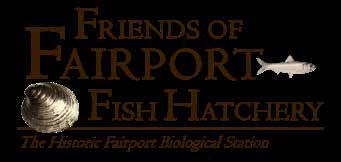
The purpose of this bill is to make possible the perpetuation of the supply of raw material for the growing American industry of manufacturing pearl buttons from the shells of freshwater mussels and the industries collateral to it. By reason of the growth and development of this industry the supply of mussel shells is threatened
with exhaustion. By establishing the station proposed in this bill it is believed that the question of artificial propagation will be completely solved, and that the supply of these shells will be perpetuated by propagation which can henceforth be carried on without material additional expense to the Government.”
“Construction was begun in the late fall of 1909; with temporary equipment,
6 Muscatine Magazine • Spring/Summer 2024


the station began operations in the investigation of mussel problems in June, 1910; the propagation of musses on a practical scale was entered upon in 1912; the main laboratory building was constructed in 1912 and 1913, and opened for general investigations June 15,1914,” wrote Robert E . Coker, Ph first Director of the Station in his 1914 report entitled: THE FAIRPORT FISHERIES BIOLOGICAL STATION: ITS EQUIPMENT. ORGANIZATION. AND FUNCTIONS
The original station laboratory building was opened in 1914 along with a small village of cottages across the road (State Highway 22)
According to Dr . Coker and newspaper reports from the time, over 5,000 people attended the dedication ceremony for the station laboratory on August 4, 1914 Governors, Senators, Congressmen, even the United States Secretary of Commerce celebrated the occasion along with Muscatine
Fairport Biological Station . Ironically, while working at the station, Mr . Boepple stepped on a mussel shell, cut his foot and died from blood poisoning
Throughout the storied life of the Fairport Fish Hatchery on the shores of the Mississippi River, the Station has seen much of America’s history flow by The original laboratory burned to the ground in 1917 to be rebuilt as a three-story, stateof-the-art research center in 1920 . Research at the Station determined fresh-water mussels could not be propagated fast enough to sustain the pearl button industry Research ended in the early 1930’s . The country experienced the Great Depression The Fairport Fish Hatchery helped raised fish to feed the country World War II saw the shuttered three-story, brick laboratory building turned into a barracks for German prisoners of war In the 1950’s the building was used as a home for the destitute by
— Continued on next page

Muscatine Magazine • Spring/Summer 2024 7
Continued from previous page —
Glad Tidings Church Staff cottages were abandoned, razed, and some even sold and moved The Director’s Cottage continues today as a private home down the road in Fairport and the Isaac Walton League is the Station’s former boat house . The Federal Government sold the facility to the Iowa Department of Natural Resources which today continues to operate it as a state fish hatchery Fresh-water mussel research and propagation is now again happening at the Fairport Fish Hatchery (see side-bar article)
Fast forward to 2024
The Fairport Fish Hatchery is Muscatine County’s newest property listed on the National Register of Historic Places
Driven by the Friends of Fairport Fish Hatchery, the historic Fairport Federal Biological Station, now features an extensive Interpretive Trail System telling the history of the site through educational sign panels,
a timeline, trail maps and videos accessible by QR Codes to YouTube, the Iowa DNR, and Friends websites Archaeological surveys, brush clearing, research and attractive graphics help the Interpretive Trails deliver a wonderfully enriching and leisurely walk through over 100 years of history A fantastic pedestrian bridge was even constructed using salvage roof trusses from the Station’s original pumphouse that couldn’t be saved and was razed in 2021
The work completed by the Friends group has been made possible through grants from the REAP Conservation Education Program, Muscatine County Historic Preservation Commission (MCHPC), the Community Foundation of Greater Muscatine, the Toyota Corporation and the National Scenic By-way Foundation, the Iowa State Historical Society for the Historical Marker Program, Roy J . Carver Charitable Trust, Kent Corporation Foundation, as well as the efforts of
hundreds of volunteers assisting with expertise and manual labor for cleanup and construction projects
Next up for the Fairport Hatchery is the completion of an Educational Pavilion Its design hopes pay tribute to the history of the Station by incorporating stones and other materials from the Pumphouse .
Friends of Fairport Fish Hatchery (FFFH) was established in November 2020 as a 501(c)(3) organization to share the stories of the Historic Fairport Biological Station The goals of FFFH are to preserve historic resources at the Fairport Fish Hatchery, support its historical and scientific research, and educate students and the public about conservation efforts (both past and present) to protect mussels and fish from impacts due to pollution, siltation, and overfishing FFFH has a charitable fund established with the Community Foundation of Greater Muscatine and is associated with the Muscatine County Historic Preservation Commission . n


For additional information about mussels, visit the National Pearl Button Museum’s new mussel exhibit This display, which opened in 2022 with the help of agenerous grant from The Carver Trust, is interactive and offers examples of various mussels used in button manufacturing and an enlarged model of mussel anatomy

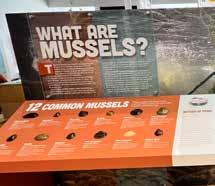

8 Muscatine Magazine • Spring/Summer 2024
W.
Street • 563-263-1052
117
2nd
muscatinehistory.org
Wmussel e need a little
Mussels and Host Fish
Mussels are being restored across the United States, including in the main reservoir at the Fairport Fish Hatchery The Fairport Biological Station was the first attempt by the federal government to restore mussel populations to pre-1900 levels While the techniques and equipment have changed over the last hundred years, the goal is the same: to return the resource to traditional levels, or as close as possible
Freshwater mussels have a complex reproduction cycle, which includes a brief stage as a parasite on a fish Fertilized mussel eggs develop into larvae known as glochidia . The female mussel needs to “infect” a host fish with the glochidia to complete her reproductive process . Glochidia attaches to the gills of the host fish to get its nutrition to grow When microscopic juvenile mussels reach about .25 millimeter long, they drop off the host fish . If the fish is in suitable habitat for the mussel species, then a new mussel bed is created or enlarged .
Mussels: Nature’s Water Filter
Mussels constantly pump water to feed and breathe
Since they live on the stream bottom, they often completely bury themselves in the substrate, leaving only their siphons exposed . In a healthy river system, mussel beds consist of thousands of individuals
Watch the Iowa Freshwater Mussels & Water Quality Timelapse video produced for Iowa Land and Sky by Iowa PBS.



to keep our rivers clean
representing dozens of species, all living harmoniously in one place . Together they filter suspended particles in the water .
Historic mussel beds had the capacity to filter hundreds of millions of gallons (or more) each day The historical mussel bed could have 100 mussels in one square meter of substrate . Using a conservative estimate of ten gallons of filtered water per day, 1,000 gallons of water were filtered each day from that one square meter of a mussel bed . Historically, and to a lesser extent today, mussel beds covered acres and acres (4,047 sq m = 1 acre) of river bottom .
Today, if you drive by the Fairport Fish Hatchery and see yellow totes floating in the main reservoir, that means those little mussels are growing up They will soon be planted into a Mississippi River mussel bed under restoration just off the river bank from the hatchery . n





The River, The Prairie The People Us vs. Nature:
Mississippi River
Resources: US Geological Survey, National Park Service, National Geographic, Office of the State Archaeologist
The current form of the Mississippi River basin in the northern United States, was largely shaped during the most recent Ice Age . Rivers are subject to constant change and the Mississippi has experienced many alterations to its main course Tributaries, seeking more direct routes to flow as the old routes became elevated and clogged with silt, created new landforms
The river reflects altered water circulation in the earth’s atmosphere, sediment conditions caused by the regulated flows through man-made navigation dams, constructed agricultural levees, altered land use in the watershed, and human-induced climate change More frequent storms and dry spells are affecting the river’s flow, and warmer temperatures are leaving it unfrozen for longer periods of time This not only affects the wildlife, but the humans living near the river as well .
10 Muscatine Magazine • Spring/Summer 2024
Prarie
Prairies are enormous stretches of flat grassland with moderate temperatures and rainfall and few trees The prairies in North America formed as the Rocky Mountains grew taller, due to the shifting of plates on the Earth’s crust . Once the mountains got tall enough, they blocked significant amounts of rain from falling on the east side of the mountains, which prevented trees from growing extensively east of the mountains and created the prairie landscape .
The extensive root system of prairie grasses held the soil firmly in place, but with moderate weather and no trees, large, open fields were created and the North American prairies became ideal for agriculture By the middle of the twentieth century, nearly all of the North American prairie grasslands had been destroyed due to extensive farming The result was miles and miles of soil with no strong prairie grass to hold it in place and few trees to block the wind When drought struck the prairie in the 1930s, high winds blew the dry soil, devastating the Great Plains .


Today, only one percent of the 2 million acres of North American prairie, is NOT used for agricultural development . Although many row crops are still grown in the Midwest, the prairie grassland is perfect for growing grains like wheat, rye, and oats, which have a substantial grass-like root system
People
Native Americans have lived in Iowa for more than 11,000 years . Prehistoric Native Americans depended on geologic materials for survival However, their use of various minerals, deposits, and landscape elements did not alter these materials to the extent that modern technology has and does
The Mississippi River Valley was inhabited by Sac and Fox tribes long before Europeans arrived in the area Marquette and Joliet explored the Iowa territory in 1673 Two years after the Louisiana Purchase of 1803, Zebulon Pike mapped the upper Mississippi Westward expansion brought settlers to the eastern shores of the Mississippi River in 1818, and the settlement of Iowa began in 1833 on land known as the Black Hawk Purchase
In the past 170 years, the city of Muscatine has grown from a trading-post to an agricultural and industrial center with the river being a transportation and distribution hub n
Top photo: Bloomington, Iowa
John Caspar Wild
Hand colored lithograph, 1845 Gift of Marianna Bishop
Left:
Prairie on Fire, Henry Lewis Chromolithograph, 1857
Gift of E Bradford Burns
Right:
Scenery of the Upper Mississippi Currier & Ives Chromolithograph, c1866
Muscatine Magazine • Spring/Summer 2024 11
12 Muscatine Magazine • Spring/Summer 2024







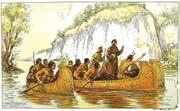




Muscatine Magazine • Spring/Summer 2024 13





14 Muscatine Magazine • Spring/Summer 2024 ssabjobs.org 563.263.2631 mpw.org Reliable, affordable utilities with exceptional, local customer service Regardless of season. In all kinds of weather, we are Muscatine • Wapello • Wilton • Columbus Junction www.commbk.net Scan to visit us online! BICYCLES • ACCESSORIES • SERVICE 1106 Grandview Ave . Muscatine 563.263.4043 www.harperscycling.com
















Muscatine Magazine • Spring/Summer 2024 15
Merrill Hotel
Pearl
Mississippi As rare as a pearl found in a Mississippi River clam, The Merrill Hotel, Muscatine, A Tribute Portfolio Hotel is a 4-Diamond boutique hotel in downtown Muscatine, Iowa, located right on the Mississippi River. Eat at 119 West Mississippi Drive, Muscatine, Iowa | 563.263.2600 | themerrill.com Connect. Create. Contribute. 315 Parham St., Muscatine 563-263-7577 114 W. 4th St., Wilton 563-316-2007 619 5th St., Durant 563-231-5300
The
The
of the
O.D.; Chris Carter, O.D.; Tara Lukkarinen, O.D.; Morgan Thorson, O.D.; Peter Korpi, O.D.; Janell Kassel, O.D. Come check out our newly remodeled office! y y 222 West 2nd Street, Muscatine, Iowa 52761 563-263-0433 MuscatineIowaRealty.com
From left: Anna Prier, O.D.; Mark
Hansen,
Bosch Pest Control: Built on a Trailblazer’s Legacy
Celebrating 75 years in business, Muscatine’s Bosch Pest Control honors its founder, Robert D. Bosch, and the values he cultivated for more than half a century.
“Bob Bosch was just a trailblazer,” said Jeff Cochran, Owner of Bosch Pet Control “He was one of the first pest control guys in Muscatine and someone who was on the cutting edge of everything he did ”
Having worked in the grain processing industry, Mr Bosch saw a tremendous
need for pest management in agricultural operations and founded Bosch Pest Control on January 8, 1949 He formulated and patented extraordinarily successful rodenticides, which resulted in the establishment of several Muscatine companies, including American Chemical/Rid-A-Bird Inc In

1974, Mr . Bosch sold his rodent cake patent to Malcolm Stack, the founder of Bell Laboratories Bell Laboratories is now the world’s leading manufacturer of rodenticide products .
But success in the world of pest management is only part of Mr . Bosch’s legacy
“Bob was a driven person,” Mr Cochran said . “He certainly was driven to serve ”
Mr . Bosch served two terms as a Muscatine Alderman and was Mayor from 1961 to 1966 He was a devoted supporter of First Baptist and Hillcrest Baptist churches in Muscatine . Bosch was also an avid bowler and local sports patron having sponsored countless bowling and softball league teams through his business
In addition to his volunteerism and support throughout the community, Bosch was a real estate developer who owned and developed Muscatine’s Houser Hill from Lucas Street to Grandview Avenue . He served his industry as one of the first Presidents of the Iowa Pest Management Association,

75 TH
16 Muscatine Magazine • Spring/Summer 2024
Jeff Cochran –Current Owner
Left to Right: LeMar and Kenlyn Miller, Karol and Jeff Cochran
and the company has long been a member of the Greater Muscatine Chamber of Commerce and National Pest Management Association, as well
Active Chamber Members for 60 Years
As Mr Cochran explains, the real legacy of Bob Bosch and the 75-year-old company he founded is having built the business on family values and taking care of people Bob passed the company on to his daughter and son-in-law, Mike and Amy Rudolph, in 1985 The couple successfully operated the business for 23 years before deciding to sell . Mr Cochran acquired the company in 2008 with his wife Karol along with LaMar and Kenlyn Miller The new owners often invited Mr . Bosch to speak to their staff
“It was less training and more of a history lesson,” said Mr . Cochran . “Bob
would share his knowledge of the industry and how they provided value-added service to the company’s customers ”
That “customer-service, history training” played a key role in teaching new team members how best to take care of each other and customers .
Although both Mr and Mrs . Miller passed away in 2020, Mr Cochran believes it is important to recognize them for the continued success of Bosch Pest Control and for helping maintain the company’s family atmosphere .
“We did life together for 12 years,” said
Learn More!
Mr Cochran about the Millers “Karol and I miss them very much . ”
Serving the Community for 75 Years
Serving Muscatine for 75 years is an important milestone the company wishes to celebrate with its family of customers, present and former employees, and the community . To recognize its anniversary, Bosch Pest Control will sponsor a Chamber of Commerce event on June 18, 2024, and will host a customer appreciation celebration later this summer n
To learn more about Bosch Pest Control services and their 75 years of serving the community, reach out to us by calling our office at 563-263-7965, go to our website at boschpestcontrol.com, stop by our office at 1103 Grandview Ave, Muscatine, send us an email at boschpc@machlink.com, or follow us on Facebook.


Muscatine Magazine • Spring Summer 2024 17
Robert Bosch 1980







18 Muscatine Magazine • Spring/Summer 2024 YOURONE STOP LOANSHOP NMLS# 641631. Equal Housing Opportunity. Federally insured by NCUA. 2915 Cedar Street • Muscatine Sara Carlson Top Selling Residential Realtor in Muscatine Proven Results Trusted Advisor Master Stager 563-506-0241 C O M M U N I T Y C O L L E G E S TH Community ’ s College Premiere Pest Control Since 1949! (563) 263-7965 1103 Grandview Ave Muscatine, Iowa www.boschpestcontrol.com




Muscatine Magazine • Spring 2023 19 DOWNTOWN MUSCATINE 210 E 2nd St. Downtown Muscatine thecoffeebeltmuscatine.com Muscatine Magazine • Spring/Summer 2024 19 SHOP • DINE EXPLORE


20 Muscatine Magazine • Spring/Summer 2024





Muscatine Magazine • Spring/Summer 2024 21


22 Muscatine Magazine • Spring/Summer 2024 UNIQUE MUSCATINE SHIRTS muscastuff.com
The Muscatine Art Center is located at 1314 Mulberry Avenue in Muscatine, Iowa. Details about programs and exhibitions are posted on muscatineartcenter.org. Hours are Tuesday, Wednesday, and Friday from 10 a.m. to 5 p.m.; Thursday from 10 a.m. to 7 p.m.; and Saturday and Sunday from 1 to 5 p.m. Admission is free of charge.
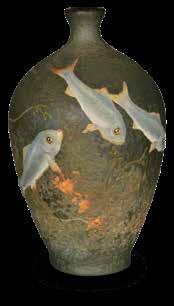



Japanese Garden Celebration
Thursday, May 2, 5 p.m. ribbon cutting followed by performance at 5:15 p.m.
The historic Japanese Garden was installed by Laura Musser McColm in 1930 . In 2023, the Muscatine Art Center completed a multi-year project to rehabilitate the garden Following the 5 p m ribbon cutting, attendees will be enchanted by Japanese storyteller,
February 24 - June 16, 2024
Animals in Art
Man’s best friend, barnyard creatures, playful kittens, circus animals, and bucking broncos are among the animals portrayed in the Animals in Art exhibition. The exhibition combines the paintings, prints, drawings, and sculptures from the Muscatine Art Center’s permanent collection with selections of art pottery on loan from Mark and Marie Latta. Featured are works by Grant Wood, John Steuart Curry, Marc Chagall, George Braque, Virginia Myers, Nathanial Currier, and many others. n
Special Events
Kuniko Yamamoto, who uses traditional Japanese music, handcrafted masks, stylized movement, and a touch of magic to bring to life myths and fables from ancient and modern Japan The performance is presented as part of the Quad City Arts Visiting Artist Series Admission is free of charge
For the Love of Art: A Tea Party Celebrating Women
Saturday, May 11, 1:30 - 3:30 p.m.
Tickets: $25/$20 Members
Reservations Required
This fundraiser for Friends of the Muscatine Art Center includes tea (or coffee) with both savory and sweet treats Reservations are made on a first-come, first-served basis Tables of two, four, six, and eight can be booked Call 563-263-8282 to reserve your spot before seats sell out

Friends Annual Ice Cream Social Sunday, June 30, 1:00 - 4:00 p.m. Summer would not be the same without the Annual Ice Cream Social! Enjoy live music, play some games with the family, explore the exhibitions, join the family bike ride to the event, and purchase some ice cream and pie to support Friends of the Muscatine Art Center Admission is free of charge
Classes

The Muscatine Art Center offers an array of classes and programs Find the current schedule at muscatineartcenter. org. Popular classes include Mini Masters for young learners on Wednesday mornings and Thursday afternoons, Workshops for Kids and Teens on select Saturday afternoons, and Adult Studio on select Thursday evenings and Sunday afternoons Classes for students are often free of charge . Studio classes for adults are typically $15 or less and include supplies n
Muscatine Magazine • Spring/Summer 2024 23

scan here to Start the Adventure!

Sign up for the READING ADVENTURE
June 10th -July 26th
Kids and Teens
LOG THEIR READING and outdoor minutes
Earn prizes and Grand Prize Drawing ENTRIES





24 Muscatine Magazine • Spring/Summer 2024







Muscatine Magazine • Spring/Summer 2024 25 CHC MUSCATINE Medical & Dental Clinics (563) 327-2140 | chcqca org Read Us Online! muscatine.com/ muscatine-magazine

A family-owned business with a global perspective.
From humble beginnings in 1927, KENT ® Corporation has grown to become a leading, worldwide, manufacturer and marketer of food, beverage and ingredients, agriculture and pet care products. KENT employs approximately 2,000 people across 70 locations and 15 countries.
Named by Deloitte Private and Wall Street Journal as a US Best Managed Company for four consecutive years, KENT takes pride in its role in the American supply chain and deep roots in Muscatine, Iowa. As one of the largest employers in Muscatine, KENT cares about the community, and generously contributes to a great quality of life here through employee volunteerism and philanthropic efforts.
Proud to Bring You These, and More, Trusted Brands:













Leading innovation. Growing sustainably. Building relationships. Creating value.
Explore Our Careers Kentww.com/careers

DOLE and other Dole marks are registered trademarks of Dole Packaged Foods, LLC and Dole Asia Holdings Pte. Ltd. and used under license.
*******ECRWSSEDDM**** PRST STD US Postage PAID MSU ECRWSS Postal Customer PRST STD US Postage PAID TRU ART ECRWSS














































































































